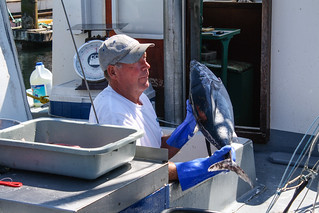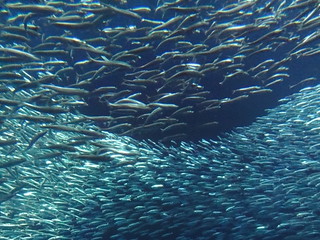 Oregon’s Fisheries: Scientists and Fishermen Working Together is the theme of the summer edition of Confluence, Oregon Sea Grant’s new magazine, available now in print and online.
Oregon’s Fisheries: Scientists and Fishermen Working Together is the theme of the summer edition of Confluence, Oregon Sea Grant’s new magazine, available now in print and online.
The cover story, “You Talk and You Change the World,” highlights Sea Grant’s fruitful efforts to connect Oregon’s coastal fishing communities with ocean and coastal researchers. Written by Nathan Gilles (the program’s 2011 communications intern, now a working journalist), the story traces more than a decade of work by Sea Grant Extension agents such as Ginny Goblirsch to get fishermen and scientists talking – and listening – to each other in small, regular, informal meetings. The resulting Scientist and Fishermen Exchange (SAFE) program provides researchers with the experience-proven insights and knowledge of those who spend their lives working with marine resources – and occasionally with valuable opportunities to conduct research directly from fishing vessels. At the same time, fishermen gain early access to research results, and the opportunity to play a part in the science that helps shape marine resource policy.
Additional articles look at new seafood processing techniques that are generating products, markets and jobs on the south coast, recent discoveries about how hypoxic “dead zones” may be affecting the reproductive capacity of certain fish and other organisms, and a surprising discovery by Sea Grant researcher Guillermo Giannico about where some Willamette Valley salmon spend their winters.
Published three times a year, the new magazine is available – with added video and other content not included in the print edition – at http://seagrant.oregonstate.edu/confluence, where a downloadable .pdf version is also available. Print copies are also available, free, by emailing sea.grant.communications@oregonstate.edu (please include a name and mailing address).





